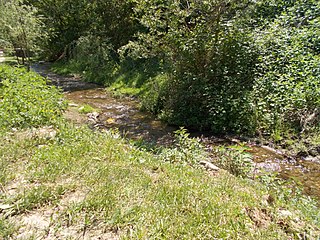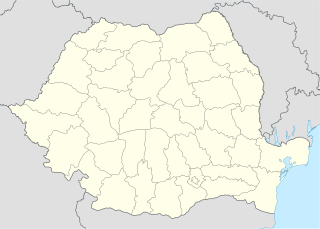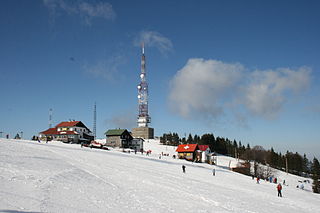| Craiova | |
|---|---|
| Location | |
| Country | Romania |
| Counties | Caraș-Severin County |
| Physical characteristics | |
| Mouth | Cerna |
- coordinates | 45°06′18″N22°39′21″E / 45.1051°N 22.6557°E Coordinates: 45°06′18″N22°39′21″E / 45.1051°N 22.6557°E |
| Basin features | |
| Progression | Cerna→ Danube→ Black Sea |
The Craiova is a right tributary of the river Cerna in Romania. [1] It flows into the Cerna downstream from Cerna Sat.
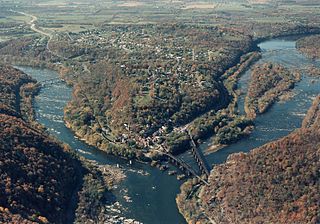
A tributary or affluent is a stream or river that flows into a larger stream or main stem river or a lake. A tributary does not flow directly into a sea or ocean. Tributaries and the main stem river drain the surrounding drainage basin of its surface water and groundwater, leading the water out into an ocean.
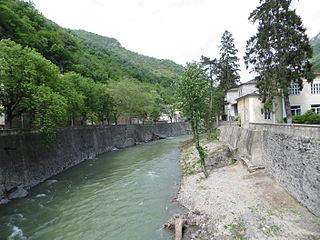
The Cerna is a river in Romania, a left tributary of the river Danube. The Cerna has its source on the south-east side of the Godeanu Mountains and flows into the Danube near the town Orșova. The upper reach of the river is sometimes called Cernișoara. With a basin of 1433 square km and a length of 84 km, it carves an erosive tectonic valley with numerous gorges, quite deep sometimes. There is a man-made lake on it (Tierna), just before it crosses the Băile Herculane spa, to perpetuate the old toponimic od Dierna. The upper course of the Cerna is part of the Domogled-Valea Cernei National Park. The Cerna flows through the villages and towns Cerna-Sat, Țațu, Băile Herculane, Pecinișca, Bârza, Topleț, Coramnic and Orșova.

Romania is a country located at the crossroads of Central, Eastern, and Southeastern Europe. It borders the Black Sea to the southeast, Bulgaria to the south, Ukraine to the north, Hungary to the west, Serbia to the southwest, and Moldova to the east. It has a predominantly temperate-continental climate. With a total area of 238,397 square kilometres (92,046 sq mi), Romania is the 12th largest country and also the 7th most populous member state of the European Union, having almost 20 million inhabitants. Its capital and largest city is Bucharest, and other major urban areas include Cluj-Napoca, Timișoara, Iași, Constanța, Craiova, and Brașov.


